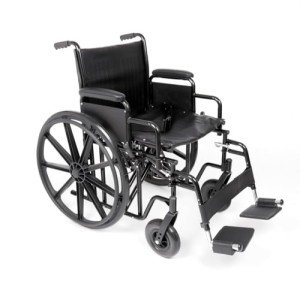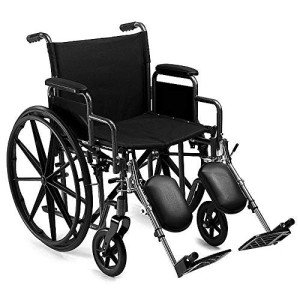10 Things That Your Family Taught You About Bariatric Living Aids
페이지 정보
작성자 Enriqueta 댓글 0건 조회 3회 작성일 25-04-11 11:44본문
 Bariatric Living Aids
Bariatric Living Aidsbariatric heavy duty transport wheelchair (overweight) patients need strong mobility aids to help them keep independence. Using small equipment increases personnel pressure and risks injuries to both the client and caretaker.
Guarantee that equipment is properly sized by performing home assessments. Widen corridors, doors, and ramps if needed for lightweight bariatric transport wheelchair equipment to safely access homes.
Walking Aids
Strolling aids are bariatric mobility equipment recommended by a medical professional or physiotherapist to maintain your self-reliance and help you recover from injuries, surgery or discomfort. They are likewise utilized long term for people with muscle weak point or balance problems. They are readily available in a variety of types to meet your needs including, walking sticks, rollators and walkers for higher stability.
Physiotherapists are the most certified to evaluate your requirements and prescribe the very best walking aid for you. This evaluation includes a review of your practical status, daily mobility requirements (e.g. browsing limits, public transport) and your risk elements for falls such as cardiovascular, musculoskeletal and neurological.
An excellent physiotherapist will be able to provide the best bariatric walking aid for you, which consists of a suitable prescription based upon your height, weight and health care strategy together with a detailed rehab program. This will optimise your recovery and decrease the danger of future injury.
Bariatric medical equipment such as bariatric electric wheelchairs for sale walking sticks, commodes, shower chairs and wheelchairs are designed to accommodate larger patients who require mobility help. Typically basic medical products can not support the added weight therefore needs to be customized with additional bracing to make sure that they are safe to utilize. This modification is an important action to help individuals with weight problems feel more confident about living independently in their own homes, and it can likewise make their experience at healthcare facility and other medical centers more workable by reducing the possibility of them being turned down for admission or treatment due to a lack of sufficient mobility equipment.
Crutches
Crutches are an efficient bariatric living aid for individuals who require support while strolling. They take weight off of one leg and allow the user to press through their hands rather than their knees or feet, helping them to move faster and more efficiently than they would be able to do otherwise. They likewise help to prevent pressure on the injured knee or foot, which can lead to further pain and discomfort.
When using crutches, it is very important to place them correctly so that the hand grips are 1 to 2 inches listed below the elbow when in a relaxed underarm position. Likewise, the axillary pad must rest versus the client's chest straight above their elbow, instead of extending down past their underarm. This will enable the user to keep their hands free for balance and control.
Patients ought to constantly walk gradually and thoroughly while utilizing crutches to avoid falls. They must avoid steep or icy slopes and keep the crutches clear of obstructions such as poles and stair railings. They ought to likewise guarantee that they are not leaning on the suggestions of their crutches, which can cause them to tip over or divert off in an instructions unexpectedly. It is advised that clients utilize crutches in pairs so that they can assist to constant one another if required.
To ascend stairs, the patient should stand close to the top of the action and hold the hand rails for support. They must then bring their crutches down to the next step below them and position their foot on it before progressing. They should then repeat the procedure of moving down each action. Additionally, the client might have the ability to ascend and come down stairs by leaning on the chair arm of a stable chair.
Lots of doctors prescribe crutches to their patients after an injury or surgery. However, if you are not comfy with them or feel that they do not supply enough stability or assistance, consult your doctor to go over options. For circumstances, you might be able to try a walking cane instead of crutches or a wheelchair if your medical professional feels that it will be better for your circumstance.
Commodes
Commodes are a fantastic bariatric living help that provides clients with toileting self-reliance. Carers can help their clients move to the commode, and after that leave the space, providing privacy and decreasing stress and anxiety for clients who have problem with going to the bathroom by themselves.
Basically, a commode is a chair with a cutout in the seat that serves as a toilet. Most have a pot connected under the cutout that functions as a collection pail for waste. The commode can be utilized as a standalone toilet or over an existing one, and numerous have detachable legs to allow it to fold flat for storage. There are numerous types of bedside commodes offered, and some might be covered by insurance coverage, so it's crucial to inspect with your healthcare provider and insurance company.
Shower Chairs
For individuals who are not able to represent long durations, entering and out of the bathtub can be difficult. Falling while trying to bathe can result in severe injuries and pain. Shower chairs, also known as bath chairs, are a bariatric living help that can assist avoid falls and make bathing safer.
There are a variety of shower chairs to fit the requirements of different people. For example, a standard shower chair with or without back can support up to 300 pounds while swivel designs enable users to being in the tub and orient themselves in a position to reach the shower knobs, soap, and so on. Some shower chairs can likewise be rolled over the toilet to function as a commode seat and are readily available with or without arms.
When selecting a shower chair, it is crucial to take measurements of the space and tub to guarantee that the chair will have the ability to fit correctly. Furthermore, some individuals find it valuable to put non-slip shower mats both inside and outside of the shower to assist keep the chair from sliding, specifically if water gets on the flooring.
Numerous people who use shower chairs discover that they can be more comfy while being in them than on a bath stool, which can be more uneasy for extended periods of time and may not have an adjustable height setting. Nevertheless, a shower stool can still be helpful for individuals who have the ability to get in and out of the tub with relative ease and are simply searching for some additional stability while bathing.
 Individuals who wish to acquire a shower chair will require to have a physician compose a prescription for it and possibly work with their Medicare Advantage strategy or personal insurer to see if they can get coverage for the product. In many cases, a person who has significant mobility concerns may be able to have the shower chair covered by Medicaid. If that's the case, the individual must talk with their state Medicaid agency to identify what the rules and policies are for that location.
Individuals who wish to acquire a shower chair will require to have a physician compose a prescription for it and possibly work with their Medicare Advantage strategy or personal insurer to see if they can get coverage for the product. In many cases, a person who has significant mobility concerns may be able to have the shower chair covered by Medicaid. If that's the case, the individual must talk with their state Medicaid agency to identify what the rules and policies are for that location.댓글목록
등록된 댓글이 없습니다.